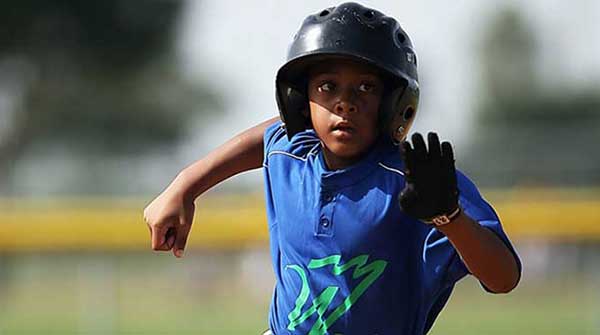 We’re in the midst of both a COVID-19 pandemic and a childhood physical inactivity epidemic.
We’re in the midst of both a COVID-19 pandemic and a childhood physical inactivity epidemic.
That creates a dilemma for young athletes and their parents: Is the risk of playing organized sports during the pandemic greater than the risk of the negative physical and mental impacts of not playing?
Young people need to move their bodies for both physical and mental health reasons. However, COVID-19 makes parents and some kids wonder if it’s safe to play organized team sports. According to the Aspen Institute, 50 percent of parents fear kids will get sick returning to sports.
And this isn’t just an issue about kids.
Is conducting youth and high school sports safe for the adult coaches, officials, organizers and administrators who make youth and high school sports possible? And while young people playing sports might not be at a high level of risk themselves, what about the parents and grandparents they go home to and interact with after practices, games and other team functions?
But when it comes to the well-being of young people, we can’t just focus on COVID. We also have to consider the negative impact of physical inactivity on our youth. And also the negative impact of young people being socially isolated from their peers.
Since the 1980s, the obesity rate in the United States has doubled among children between two and 11 and quadrupled in teens 12 to 19. And childhood and youth obesity has nearly tripled in the last 30 years in Canada. Those are pre-COVID stats.
Things have gotten worse since COVID hit. There has been nearly a 50 percent drop in physical activity among U.S. children from the start of the pandemic, according to a survey done in September by the Aspen Institute. That spike in physical inactivity will undoubtedly have negative health implications.
In addition, many kids are struggling mentally and emotionally without sports. A survey of high school athletes conducted by the University of Wisconsin in July found 68 percent were experiencing feelings of anxiety and depression at levels that typically require medical intervention. That figure is nearly 37 percent higher than what was found in pre-COVID surveys.
“The results are both striking and concerning,” said Dr. Claudia Reardon, associate professor of psychiatry at Wisconsin’s School of Medicine and Public Health.
In an era of childhood obesity – in which kids are spending more time staring at screens and not moving than ever – we need our young people to be more active, not less.
What’s particularly concerning is that young people are finding things other than sports to spend their time on during the shutdown. Their interest in playing sports has dropped. Nearly three out of 10 children who played a sport before the pandemic are no longer interested in participating, according to the Aspen Institute study.
Along the same lines, only 53 percent of parents expect their children to resume their sports participation at the same or higher rate as before COVID restrictions set in.
Despite the ongoing pandemic, some areas have decided to move ahead with indoor sports as the calendar turns to 2021. For example, as of Jan. 1, New Jersey has lifted its ban on indoor youth sports.
“We recognize that any continuance of the pause would likely mean that many sports’ seasons would have to be scrapped entirely,” said New Jersey Gov. Phil Murphy. “We do not wish to see that happen. We know that sports are important for both the physical and mental wellness for our youth and our other residents.”
True indeed.
Anthony Fauci, director of the National Institute of Allergy and Infectious Diseases, is telling Americans they could approach herd immunity by fall and a return to normality by the end of 2021.
If we’re waiting for normality to return before resuming youth and high school sports, we’d have to cancel winter, spring, summer and fall sports. Given the negative impact on the physical and mental health of youth and high school athletes from a sports shutdown, that doesn’t seem to be a rational option.
Perhaps the best – albeit not perfect – solution is to allow youth and high school sports for the participants but ban parents, other fans and non-essential adults from being involved. That’s an excruciating possibility for parents and grandparents who love watching their kids and grandkids compete.
But it might come down to that undesirable option or no sports at all for young people this year.
Ken Reed is sports policy director for League of Fans (leagueoffans.org), a sports reform project. He is the author of The Sports Reformers, Ego vs. Soul in Sports, and How We Can Save Sports.
For interview requests, click here. You must be a Troy Media Marketplace media subscriber to access our Sourcebook.
![]() The views, opinions and positions expressed by columnists and contributors are the author’s alone. They do not inherently or expressly reflect the views, opinions and/or positions of our publication.
The views, opinions and positions expressed by columnists and contributors are the author’s alone. They do not inherently or expressly reflect the views, opinions and/or positions of our publication.


